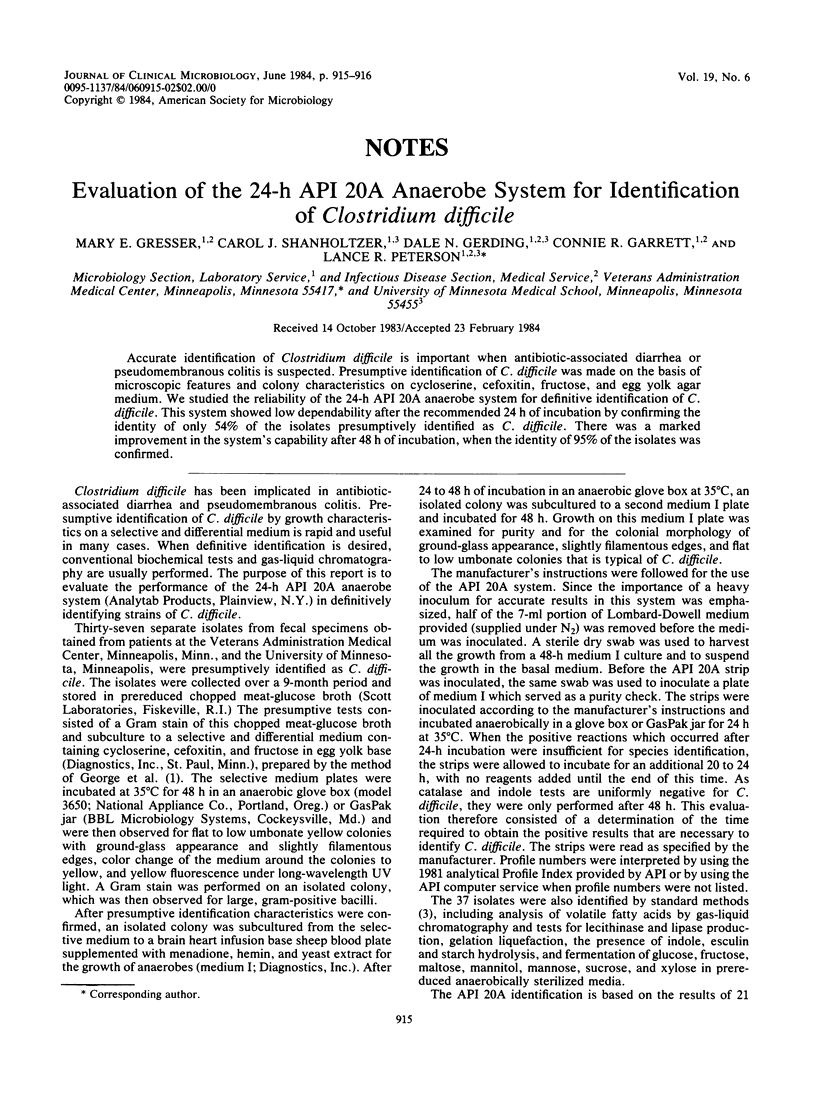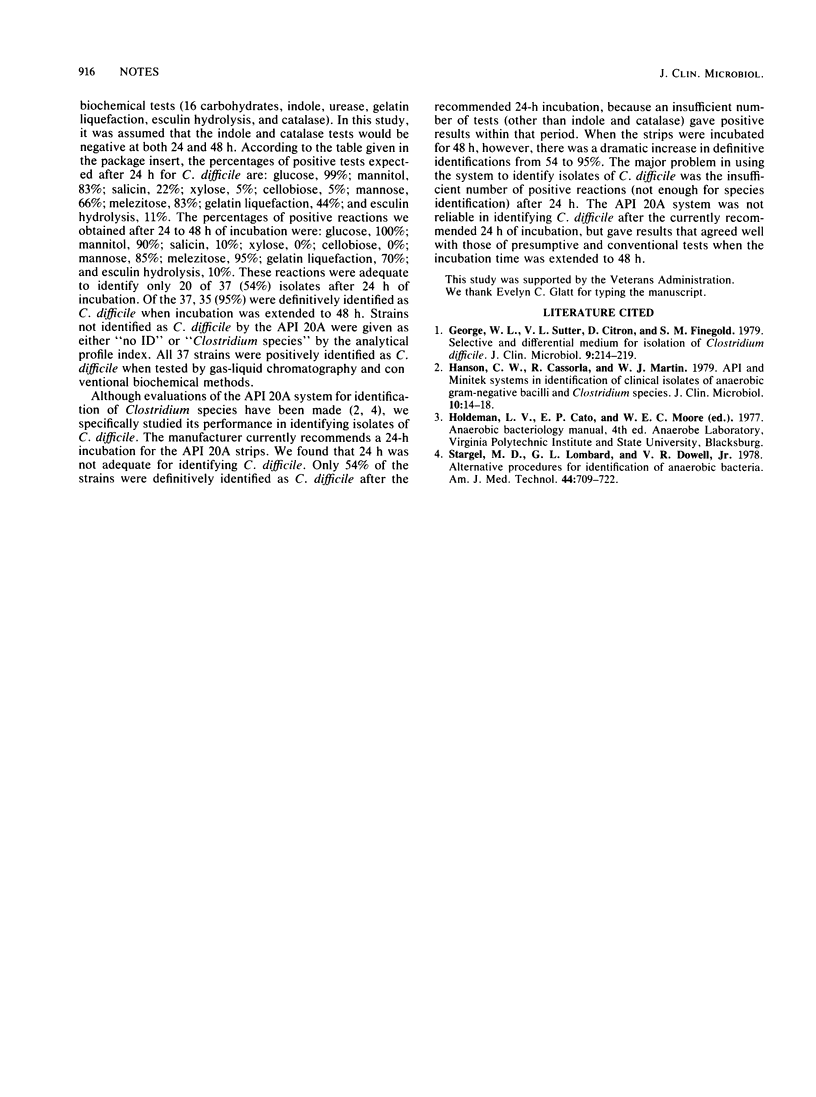Abstract
Accurate identification of Clostridium difficile is important when antibiotic-associated diarrhea or pseudomembranous colitis is suspected. Presumptive identification of C. difficile was made on the basis of microscopic features and colony characteristics on cycloserine, cefoxitin, fructose, and egg yolk agar medium. We studied the reliability of the 24-h API 20A anaerobe system for definitive identification of C. difficile. This system showed low dependability after the recommended 24 h of incubation by confirming the identity of only 54% of the isolates presumptively identified as C. difficile. There was a marked improvement in the system's capability after 48 h of incubation, when the identity of 95% of the isolates was confirmed.
Full text
PDF

Selected References
These references are in PubMed. This may not be the complete list of references from this article.
- George W. L., Sutter V. L., Citron D., Finegold S. M. Selective and differential medium for isolation of Clostridium difficile. J Clin Microbiol. 1979 Feb;9(2):214–219. doi: 10.1128/jcm.9.2.214-219.1979. [DOI] [PMC free article] [PubMed] [Google Scholar]
- Hanson C. W., Cassorla R., Martin W. J. API and Minitek systems in identification of clinical isolates of anaerobic gram-negative bacilli and Clostridium species. J Clin Microbiol. 1979 Jul;10(1):14–18. doi: 10.1128/jcm.10.1.14-18.1979. [DOI] [PMC free article] [PubMed] [Google Scholar]
- Stargel M. D., Lombard G. L., Dowell V. R., Jr Alternative procedures for identification of anaerobic bacteria. Am J Med Technol. 1978 Jul;44(7):709–722. [PubMed] [Google Scholar]


